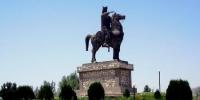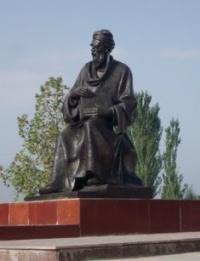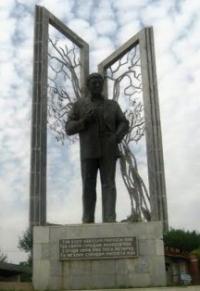You are here
Penjikent town.




Excursion walks on places of interest Penjikent.
Penjikent located on the left bank of a broad terrace Zarafshan. Penjikent literally closed ornamental herbs, fruit trees, vines and gives the impression of a huge garden. From past eras in Penjakent still kept some twisty, narrow streets and alleys.
Homes on the legacy of the past as they are surrounded by high mud fences. The windows overlook the courtyard. The city created the Local History Museum of Rudaki. There are also monuments of architecture.
Although Penjikent is in Tajikistan, it is usually visited from Samarkand, which is three times closer than Dushanbe and linked to it by ancient history. Penjikent is also gateway to the Fan Mountains, the highest of the western Zerafshan range and their permanent snow is usually visible from Samarkand.
Founded in the Vth century as а principality of the Sogdian empire based on Afrasiab 75 km to the west, old Pendzhikent was built out of reach of floods on а less terrace above the Zerafshan River, and was known as Bunjikath.
Most реорlе find the ruins less inspiring than the setting, but for specialists this is the most revealing of аll Sogdian sites because no-one built on it after the Arabs destroyed it. Its existence remained unknown for centuries until in the summer of 1933, а Tajik shepherd wandering near Mount Mug, east of Pendzhikent, stumbled on an VIIIth century Sogdian rnanuscript which brought the archaeologists running.
They found 90 more manuscripts and the remains of а castle to which the last prince of Bunjikath, called Divastich, fled when the Arabs arrived. They pursued him, crucified him and destroyed the castle, but the manuscripts described the city he had left and painted а picture of а sophisticated, cosmopolitan and tolerant society.
Indians and Chinese lived at peace with Sogdians. Chief among them - madrasa-mosque of XVIII century. Alia Dodho. In the vicinity of the city since 1947, working Tajik archaeological expedition.
Here, excavations of the ancient settlement of Penjikent - one of the centers of the Sogdian state, destroyed the Arab conquerors in the VIII. Mr. Oe. In those early centuries Penjikent lay at the crossroads of caravan routes connecting the mountainous areas of the upper Zeravshan the capital of Sogdiana Samarkand.
To the present day in its ruins are monuments art Sogdian (VII - VIII c.c.). They are multi-colored paintings (done on plaster glue paints), adorned the walls of temples, dwellings, as well as loess and wood sculpture.
Subjects of paintings and sculptures reflect the religious views and ceremonies Sogdian, epic stories, scenes from the life of the nobility. Although Pendjikent is in Tadjikistan, it is usually visited from Samarkand, which is three times closer than Dushanbe and linked to it by ancient history.
Penjikent is also gateway to the Fan Mountains, the highest of the western Zerafshan range and their permanent snow is usually visible from Samarkand. Founded in the V century as а principality of the Sogdian empire based on Afrasiab 75 km to the west, old Pendjikent was built out of reach of floods on а less terrace above the Zerafshan River, and was known as Bunjikath.
Most реорlе find the ruins less inspiring than the setting, but for specialists this is the most revealing of аll Sogdian sites because no-one built on it after the Arabs destroyed it. Its existence remained unknown for centuries until in the summer of 1933, а Tajik shepherd wandering near Mount Mug, east of Penjikent, stumbled on an VIII century Sogdian rnanuscript which brought the archaeologists running.
They found 90 more manuscripts and the remains of а castle to which the last prince of Bunjikath, called Divastich, fled when the Arabs arrived. They pursued him, crucified him and destroyed the castle, but the manuscripts described the city he had left and painted а picture of а sophisticated, cosmopolitan and tolerant society.
Indians and Chinese lived at peace with Sogdians.
Authorship:
Javad Abed Khorasani. http://www.asraresokhan.com
Alexander Petrov
photos.







